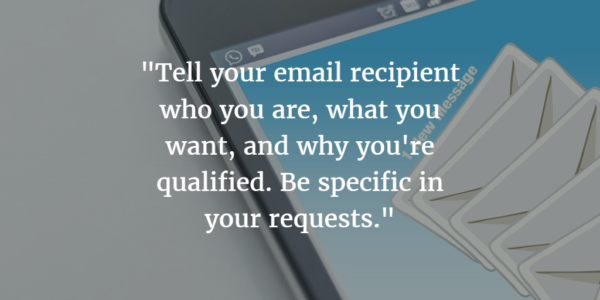
There are a million reasons why you might want to email or message a stranger on the internet. For our purposes let’s assume that you have a product, article, idea, or inquiry of some kind that you’re hoping another person will take interest in. This is essentially an internet cold call and it comes with advantages and disadvantages. If you want to increase your chances of receiving a response, I have a few suggestions that can help steer you in the right direction. Remember that you’re asking them for a favor, so act accordingly.
Be Considerate
Never forget that there’s another person on the other end of that inbox you just catapulted your email into. If by chance they happen to read your outreach, it’s your job to make sure it’s a pleasant experience. Being considerate toward them is reflected in two main ways: the way you speak to them as well as the actual content of your message.
You’ve never met the recipient of your email before and they don’t owe you anything. Be very careful in your over-enthusiastic invitations to “grab some coffee” or “jump on a quick call” so that you can “pick their brain.” All three of these things can eat up a lot of time in their probably very busy day. Remember to be considerate in the way you write as well as in what you request. This is particularly important when outreaching via social media where everything you say is publicly available. It’s possible to generate great leads on social media as long as you always put your best foot forward.
Demonstrate Value
I once received an email from an individual telling me that I simply HAD to take advantage of their proposal, because it was a “great opportunity.” Yet they never showed and convinced me it was, instead preferring to tell me it was. I was never convinced because they’d never even tried.
Use some business etiquette, folks. Don’t try to brute force the padlock open, especially when you don’t have leverage (value to offer) or the key (knowledge of their pain point). State your case and be respectful without demanding attention like a toddler.
Tell your email recipient who you are, what you want, and why you’re qualified. Be specific in your requests. The individual you’re emailing isn’t a mind reader – make sure your words are clear and actionable.
I’ve received too long emails in the past from people who don’t understand how to be brief. If you want to write for them, ask. If you want them to review your product, say so. There’s no need to wax poetic.
Choose Your Audience Wisely
Don’t be a time waster either. Know the background of the person you’re pitching and what they specialize in before you press ‘SEND’. Don’t pitch a new type of dog treat to an ESPN sportswriter: you’re barking up the wrong tree. Even when you’re on the correct site it is possible to pitch the wrong person. Do research and try to find the best person to answer your requests as directly as possible. Sending emails into generic web form inboxes isn’t a great way to get your email read or responded to. Reach out to the person with the authority to answer your questions and fulfill your requests. Choose wisely and you’ll be more likely to hear back.
Remember to be considerate of their time, demonstrate the value you bring to the table, and above all take the time to know your audience. Each of these are elements to crafting outreach that can help you get responses from the busiest professionals. Go forth, email, and comment below if you’ve found success using any of these tips!